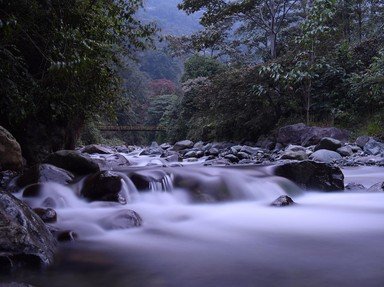Quiz Answer Key and Fun Facts
1. This picture shows Bolivia's Lake Poopó. It is mostly fed by the River Desaguedero, which flows into it at the north end. But by what means does most of this water leave the lake?
2. Here we have Lake Guatavita in Colombia. A particular native ritual associated with this lake is believed to be the basis of which legend?
3. This is Lake Viedma in Argentina. After whom or what is it named?
4. Lake Tota is the largest lake in Colombia. What interesting feature does it share with Scotland's Loch Ness?
5. This large, odd-shaped lake lies between Argentina and Chile. In Argentina, it is known as Lago San Martin. What do the Chileans call it?
6. The native name for this Peruvian lake is Chinchayqucha. What is its Spanish name, derived from that of a nearby town?
7. Brazil's Lagoa dos Patos (Duck Lagoon) is separated from the sea by a narrow, low-lying strip of land. Which particular sea is this, which can be seen on the right of this satellite photograph?
8. Lake Maracaibo in Venezuela is famous for which atmospheric phenomenon?
9. As can be seen from this photo, the Laguna Verde (Green Lagoon) in Bolivia is aptly named. What gives it its typical green colour?
10. With a surface area of over 3000 square miles, Lake Titicaca is arguably the largest lake in South America. In which two countries is it located?
Source: Author
stedman
This quiz was reviewed by FunTrivia editor
Pagiedamon before going online.
Any errors found in FunTrivia content are routinely corrected through our feedback system.

